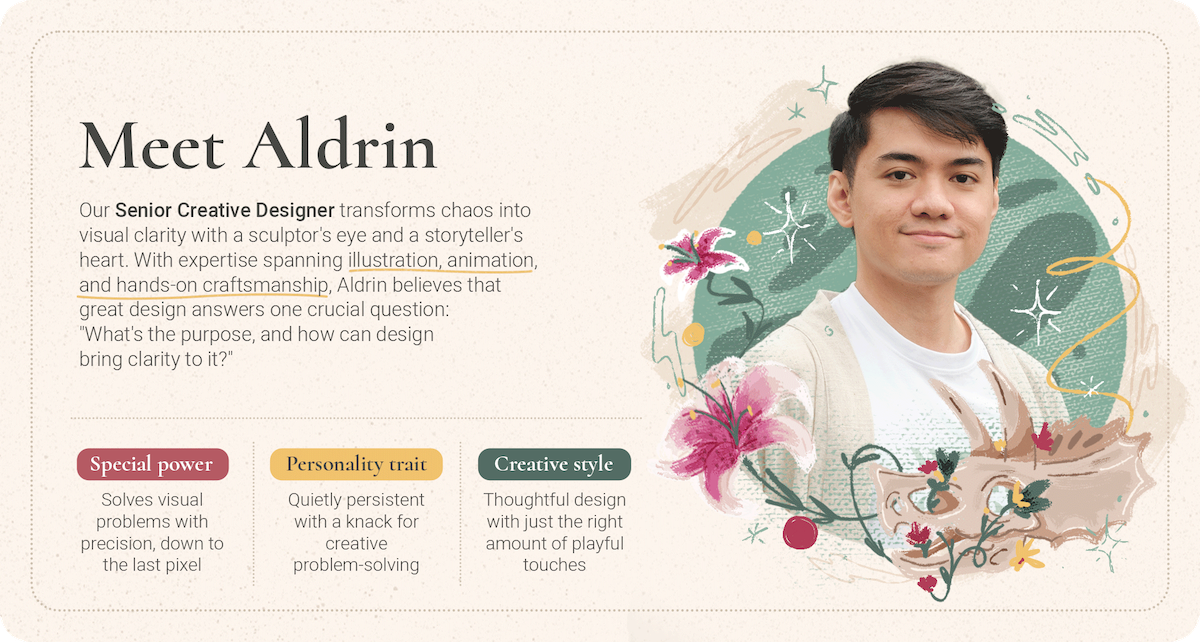
Raise your hand if you’ve ever been in the following situation:
You learn of a brilliant content marketing practice from a high-profile marketer in the West.
You feel “seen” when they describe the problem because you’re experiencing it, too.
You begin adopting the marketer’s advice.
What follows feels like a splash of cold water:
- Your bosses or clients reject the tactic
- Your marketing team is utterly confused
- Your customers don’t get the point
You get a nagging feeling that neither the tactic nor your implementation was wrong…
It’s just that the ‘best practice’ didn’t fit your cultural context in the first place.
As someone who’s always eager to test new theories against reality, I’ve experienced this scenario many times. It’s a painful but necessary reminder that content marketing in Southeast Asia has yet to reach the same level of maturity and saturation as in the West.
Still, even as our industry evolves, our version of content marketing maturity may look very different from the version we see across the world.
That’s because while marketers on other shores have a treasure trove of tried-and-true tactics, we in Southeast Asia have yet to codify the practices that work effectively within our corporate norms and cultural contexts.
Grains of salt
Take, for example, the popular product-led, SEO-driven tactic of creating dozens of pages that compare your own product with that of a competitor.

It’s a staple in the SaaS growth marketing playbook. It’s simple, efficient, and addresses a common customer dilemma.
So why would a company reject this tactic—especially when that company’s product has little differentiation from its competitors?
Because these opinionated comparison pages violate the norms of face and harmony.
They require you to assert your superiority, point out someone else’s shortcomings, and express unequivocal opinions. They also open you up to rebuttals—someone could prove you wrong! All these run counter to our shared social values and cultural nuances.
That’s why comparison content is barely seen in Southeast Asian content marketing.
Could marketers and their bosses change their minds about this tactic? Sure.
Would it persuade customers instead of backfire on one’s brand? Most likely.
But that’s the future yet. In the near term, simply going with the flow won’t get us to our goal. We need to chart our own path to navigate the content marketing challenges we encounter on this side of the world.
Rise is part of our efforts to do so.
Introducing Rise, a newsletter by With Content
Rise is a byproduct of our team’s efforts to demystify modern content marketing and codify best practices in a Southeast Asian context.
As a content marketing agency that works with B2B businesses in Southeast Asia, we’ve had to chart many new paths.
We’re constantly researching and brainstorming about how to solve our clients’ problems, make their jobs easier, sharpen their competitive edge, and spot opportunities and threats.
Last year, we started an internal newsletter for our small team to record and advance our thoughts and solutions on content marketing. We dug into the depths of our past wins and mistakes, and brought to the surface new insights and ideas.
For instance, we realized that to truly become a strategic content marketing agency, we had to embody strategy across all our functions.
Strategic thinking didn’t happen only when we developed content marketing campaigns and briefs—it also applied to account and production management, writing and editing, design, sales, and internal matters.
We needed a method that was both truly useful and easy to adopt—not mere busywork or an overhaul of our workflows.
We discovered WWHTBT (What Would Have To Be True), a simple thinking tool formulated by strategist Roger Martin. WWHTBT requires you to imagine your desired scenario first, then think backward to the things that would have had to happen to make your vision come true. Then, you act on the ‘thing’ that’s both within your ability to control and has a significant impact on shifting reality:

You can use WWHTBT in virtually any scenario. In our internal newsletter, we identified examples of how we could apply it to each of our functions, and even to our personal lives:

This is just one example of our team’s informal newsletter.
Here’s how WWHTBT might apply to content marketing:

These insights and experiments have been invaluable in helping us to consolidate our thoughts on content marketing in Southeast Asia.
So we’ve decided to ‘think in public’ by repurposing our newsletter and sharing it with you.
Rise is a Friday morning newsletter that shares With Content’s theories, experiments, and learnings in tackling dilemmas like:
- Why does strategy sometimes feel like guesswork? Are there frameworks I can use to think more strategically as a marketer?
- What’s a content audit and what’s the point of doing it?
- I don’t want to overemphasize SEO in ideation as I want unique, differentiated content. But the higher-ups want to see a “data-driven” justification for each article. What other types of data and narratives can I use to make a compelling case for my ideas?
- What does a strategic editorial brief look like?
- How can I make data meaningful to readers and decision-makers?
Does Rise offer answers to these challenges?
Sometimes. At other times, we share our hypotheses and tests instead.
We encourage you to experiment along with us, or adapt our theories to fit your context.
In the process, we continue our mission to raise the bar of content marketing in Southeast Asia—calling forth the proverbial rising tide that lifts all ships.
Subscribe to Rise today
Do you have a content marketing dilemma you’re thinking through?
Do you secretly doubt popular marketing wisdom?
Do you have concepts and practices you want to codify?
If so, we invite you to come along with us on our journey.
Subscribe to Rise and get the first newsletter next Friday:




